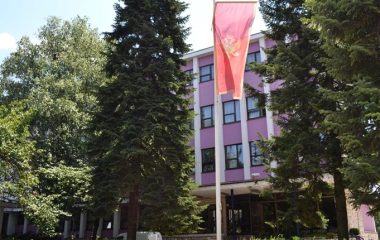
Photo: Balkan Green Energy News
The quantities and types of waste are yet to be determined, which is the most important factor for managing the resource, members of the team behind the Serbian White Book on Waste-to-Energy said at its presentation in Belgrade. According to the widely accepted hierarchy, only the waste that cannot be used in a different way is incinerated, they explained and stressed that incineration and recycling are complementary.
The hottest summer is coming to an end, but the temperatures in Serbia and the region remain extremely high. More and more fires are breaking out in thousands of landfills: from small waste dumps next to roads and waterways to relatively arranged sites with sorting units. Environment Engineering Group picked the right moment to present its Serbian White Book on Waste-to-Energy, written by domestic and Austrian authors.
The combination of ever more intensive droughts, heat and a constant rise in the quantities of generated waste contributes to fires. They are caused by self-ignition or other factors. The authors and other members of the team pointed out that the solution is to establish a separation system. All recyclable waste would be used for other purposes, so the energy is produced only from what remains after all the other stages in the hierarchy.
Incinerators can generate both power and heat – in particular, hot water, district heating and cooling energy and process steam for industrial consumers. Some kinds of waste are an alternative fuel, for instance in cement kilns.
The new white book describes the available technologies from incineration itself and energy recuperation to the disposal and utilization of the residues.
The next presentation is scheduled for September 17 in Novi Sad, Serbia’s second-largest city. The next event would be in Negotin in the country’s east late this month.
Industrial production is much more scrutinized than municipal waste
The first step must be the prevention of waste generation, Environment Engineering Group’s President Igor Jezdimirović said.
He noted that 95% is mining waste. Even 15 years after Serbia adopted the Law on Waste Management, the quantity and composition of the remainder hasn’t been determined, the head of the organization pointed out.
“The situation is a little bit better in the industry, because the industry is under a bit more vigilant public eye and the inspection reacts more rigorously. As for municipal waste, we have an unbelievable situation that, even after fifteen years, we have a third of local authorities persistently refusing to fulfill their legal duty. To report on the waste quantities and composition. It means that when we handle data, we are actually still handling estimates,” Jezdimirović stated.
When it comes to planning for big facilities, if you can’t measure it, you can’t manage it, he warned.
More landfill fires year after year
There were 877 fires registered in Serbia in 2015 and the number grew almost every year. Environment Engineering Group obtained the data from the Ministry of the Interior. The list for 2022 contains 1,760 such events, which means four or five new landfill fires every day.
Jezdimirović highlighted the risks to human health from such fires because of the exposure to polluted air.
There are 504 waste-to-energy facilities in the European Union, he stressed. The goal is to set up a sustainable system, and it will lead to a rise in costs, Jezdimirović said.
Jezdimirović: The worst is to think that we got off cheaper, to not pay
“To think that we got off cheaper is the worst. To not pay and think that someone can take a kilo of our municipal waste to the landfill every day and that it costs us EUR 2 per month. What we saved then is going to come back through everything that firefighters have to do and all the polluted air from the fires, through all the pollution, be it through the ground, be it through water or through food. Instead we could have solved it and earmarked a part of the budget to adequately manage the environment or, in this case, waste,” he explained.
The main purpose of utility services is a safe and healthy environment, Jezdimirović underscored.
Incinerators must cover widest spectrum of possible pollutants
One of the authors, chemical engineer Helga Stoiber from Austria, says it is difficult to determine everything that municipal and household waste contain. Some people throw in the bin what isn’t supposed to go there, like batteries, she added.
Therefore there is the possibility of the presence of heavy metals, chlorine, sulfur and persistent organic pollutants (POPs), Stoiber asserted. Within the POPs category are the notorious dioxins and furans.
“One of the basic principles in planning the construction of waste-to-energy facilities is that indeed anything might come along in the waste. So the facility must be equip to handle it,” the waste management and incineration expert said.
Anything might come along in the waste, so incinerators are designed to neutralize all toxins and pollutants
Waste regulations have the strictest requirements of all industrial sectors in the EU, Helga Stoiber stressed. Emission limits are the lowest, and the list of monitored substances is the longest.
There were 1,800 landfills registered in Austria in 1984 including the illegal ones. According to the latest data, there are only 62! Incoming material is controlled, landfill gas is extracted and the leachate is processed.
Under the EU’s 1999 Landfill Directive, which was amended in 2018, only 10% of municipal waste will be allowed to be landfilled. Before its accession, Serbia will need to adopt it together with all the other rules and regulations.
Vinča landfill fire was bombardment with dioxins, furans
In 2021, a fire at the country’s largest landfill, in Vinča at the outskirts of Belgrade, lasted seven days. According to some estimates, the amount of dioxins and furans emitted then was at least equal to the one over the entire NATO bombing of two and a half months in 1999, said Aleksandar Jovović, one of the reviewers of the white book.
It all drops near the landfill, unlike sulfur dioxide, which is spread as far as thousands of kilometers away, he added. Dioxins and furans enter the food chain, Jovović said.
The goal is to landfill only what can’t be recycled and the residue from energy recovery
Dejan Radić, the other reviewer and also a professor at the Faculty of Mechanical Engineering of the University of Belgrade, noted that the cement industry was the first in Serbia to recognize the significance of waste as a raw material for energy production. Chemicals producer Elixir will build the first energy production facility in the country that would incinerate hazardous and nonhazardous industrial waste, he said. The Beo čista energija joint venture put its combined heat and power (CHP) plant in Vinča into regular operation last month. The facility using municipal waste is the first in the Western Balkans.
If there is no primary separation, waste incinerators must be bigger, overdimensioned, and the purification systems much more complex, Radić underscored. The goal is to landfill only what can’t be recycled and the residue from the thermal treatment of waste, he said.
It’s either controlled incineration or thousands of landfill fires
The calorific value of solid municipal waste equals lignite, the authors wrote in the Serbian White Book on Waste-to-Energy. The calorific value of waste plastics and oil is like in hard coal and heating oil.
They claim that specially designed incinerators that are strictly controlled and have all the necessary environmental protection equipment enable waste energy recovery without harmful effects on people’s health and the environment.
The technology isn’t without controversies. For instance, high levels of POPs were discovered in food and the environment near waste incinerators. Such effects were also acknowledged in the new white book. But the development of dioxin and pollution control and the introduction of stricter emission standards and regulations led to a significant decrease in the levels of dioxin emissions from incinerators since the 1990s, the authors pointed out.
Importantly, there is still no data about the toxicity in the areas around the thousands of landfill fires in Serbia over the last few decades. The potential links between “morbidity and mortality from specific neoplasms and living around landfills, with a focus on the ones where fires are often registered,” are also lacking, the document reads. The population around landfills is exposed to pollutants from ambient air, water and food.









Be the first one to comment on this article.